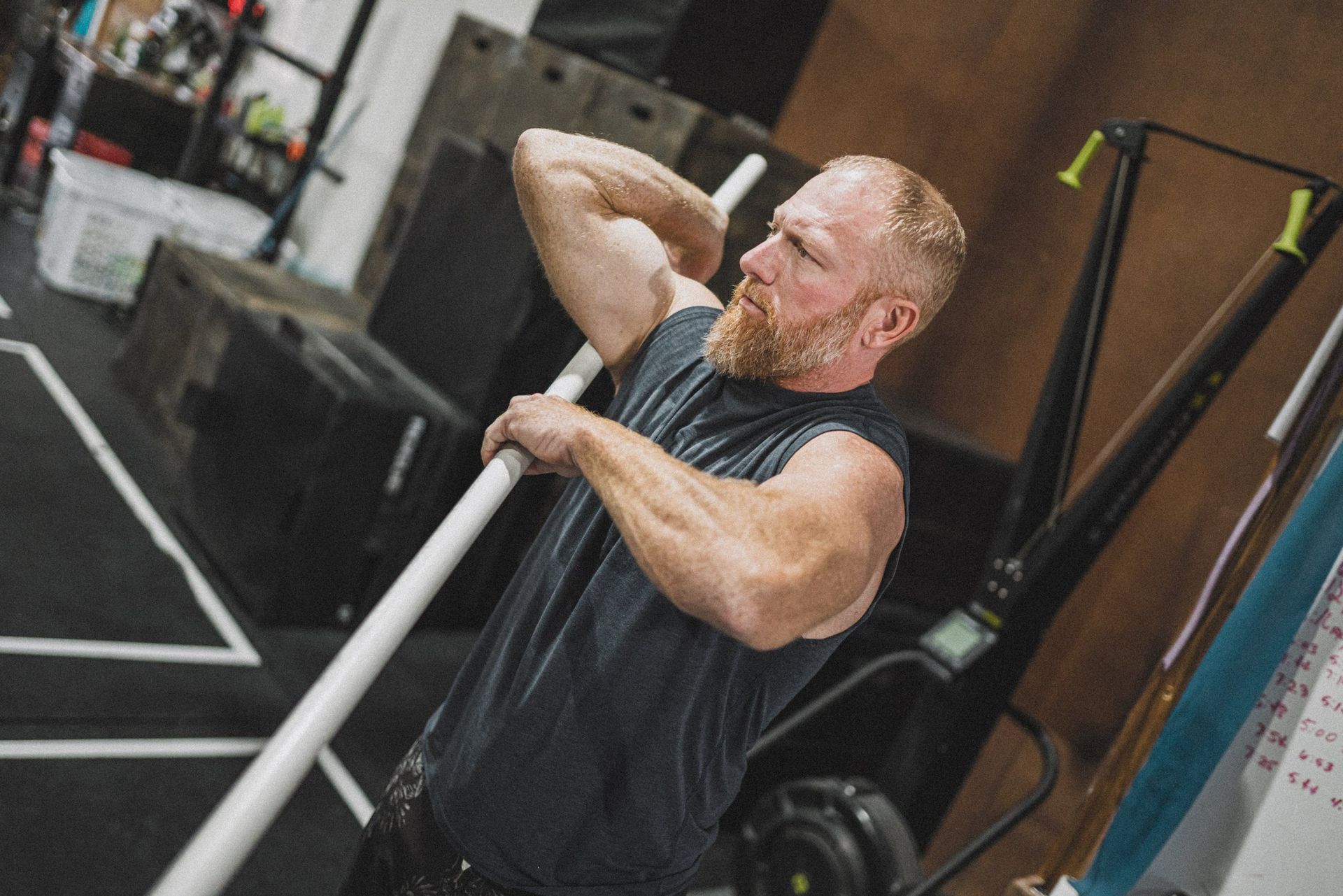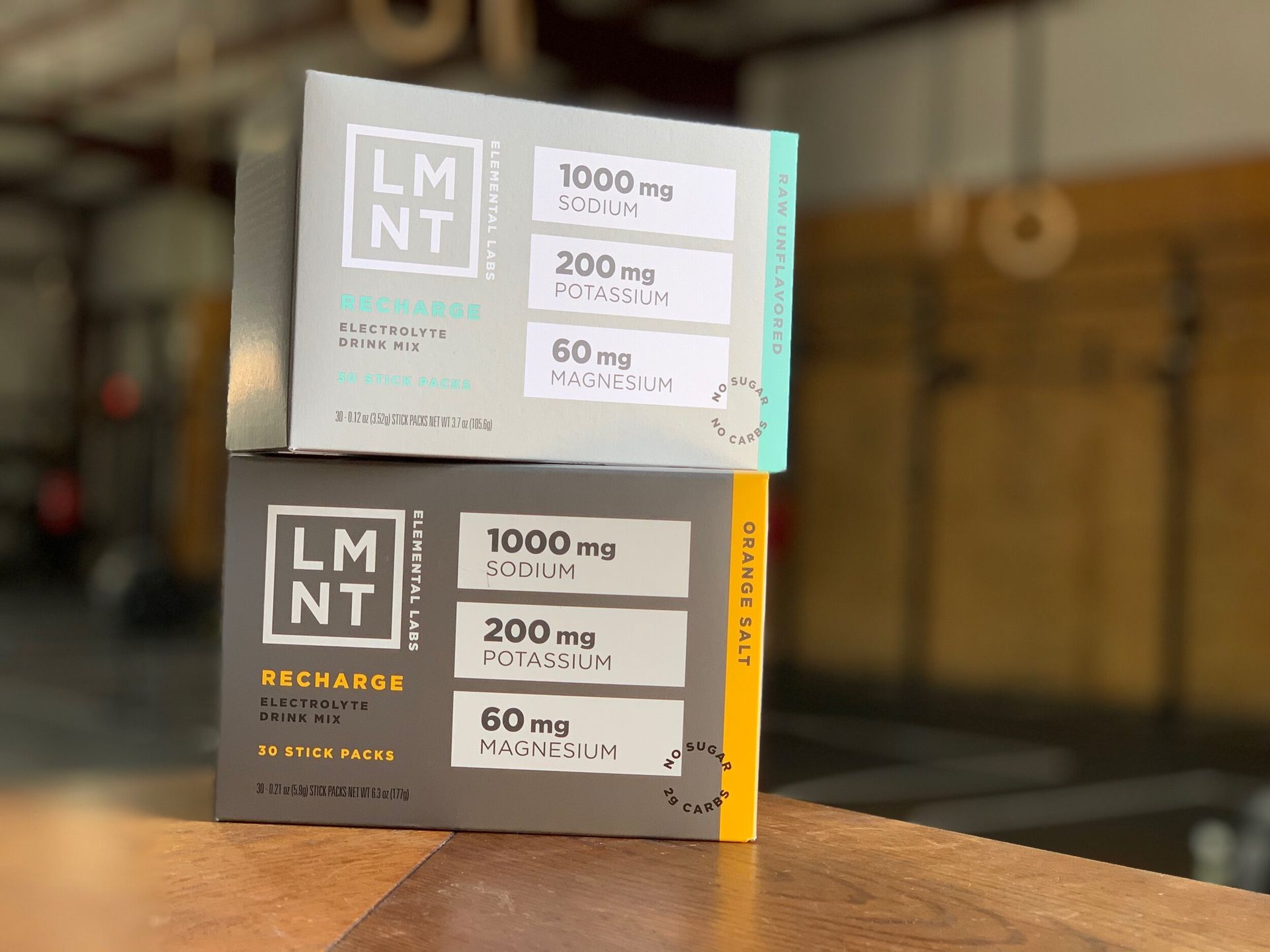On Programming: The Heavy Day

When I sit down to program the next week for KWDCF I start with the heavy day. Everything else revolves around and builds off the implications of that day. I am going to go over the how of the heavy day and then go over the why (in reference to why I program this day first).
Our heavy day is on Monday. I pair two movements in a classic push/pull combination. This can be either a lift or a bodyweight movement, but I won’t combine two push movements or two pull movements. In other words I won’t be combining HSPU (handstand push-up) with a push jerk or a bench press, I would combine HSPU with a clean or a deadlift. Or I might combine deadlift with ring dips or DB push jerk. I will pair the same two movements for three to four weeks. In years past I would keep the same pair for five to six weeks. But as I mentioned in the last episode, and hence the name of this series, the devil is in the details. As the programmer for KWDCF, my members are trusting me to make them more fit, regardless of whether you have been with us for 1 month or 10 years, and regardless if you have worked out your whole life or just started. So, I need to be very observant. I have the privilege of having my own petri dish. I noticed during our early strength cycles that the spark was going out of everyone’s eyes by the fifth and sixth weeks. They were worn down. The same neurological pathways and movement patterns in the body were getting beaten down for too long. What is one of the many things that makes CrossFit so effective for the long haul? The variety; the constantly varied aspect. So where is the sweet spot between constant variety and still working through a linear progression on certain lifts/movement patterns to have the long-lasting effect of making of making everyone stronger? I have concluded it is in the three to four week timeframe. That can depend on how taxing those movements are. I have observed that lifts like deficit deadlifts, squat cleans to split jerk, or just squat cleans by themselves are exercises that I will usually run for three weeks. Bench press or overhead squat are lifts that I would run for four weeks.
Up next is rep range. This is the one that might be a little controversial. For the lifts, I will do a normal linear progression where the weight increases week to week and the number of reps goes down. For the bodyweight movements, if there is no external weight added, then the intensity by nature does not increase. If you are doing a pull-up with your body this week you are using the same body next week. So, in that case, the reps will go up each week. Therefore, the goal is to work on strength and stamina for movements like pull-ups, dips, or HSPU.
If you take the CrossFit programming course they will tell you the rep range for lifting is between 7 and 20 reps. At the lower end of that range, I have not found it to be enough stimulus to get the best strength gains for my members. I do not think things like Wendler 5/3/1 or 7 sets of 1 is enough volume to make you stronger. Those kind of rep ranges are great for a maintenance phase. For instance, during The Open when I my goal is just to maintain strength and make sure we are still flooring it on a regular basis without making anyone too sore or worn down, those are great rep ranges. When I am trying to build new strength, not just get your body to fire more motor units at the same time (a neurological adaptation) but really make you stronger than you were before, the rep range needs to be between 18 and 35 reps, occasionally up to 40 reps (18 meaning 9 sets of 2 reps, or if I did 7 sets of 4 reps that would be 28 total reps). At the higher end of that range (28-40 reps), the percentages would be between 65 and 75%. If you get down to between 18 and 24 reps then the percentages would be high 70s all the way to lower 90s. I am personally a big fan of this because it is effective, helps the class run smoother, and takes out a lot of the guesswork at keeping the weight the same across all the sets. For those of you that care, this is my CrossFit version of Charles Polquin’s AGV method.
That is the how for the heavy day. Hopefully that wasn’t too much detail, and you are still following along.
Now I’ll get to the why. Why do I start with the heavy day?
If the heavy day is done properly, you should be feeling the effects of it for at least the next couple of days and possibly even longer than that. You didn’t get stronger while you did that heavy day workout. You get stronger in the days after that as your body compensates and then overcompensates for the stress you applied to your muscles. Here I will reiterate, with the goal being to win the long game, the next few days after that should give you an effective workout while still allowing those muscles to recover. By nature, the heavy day will probably be the most stressful day on your neurological system and one of the most stressful days on your connective tissue. Since we have classes 7 days a week at KWDCF I need to take that into consideration when I am adding workouts before and after the heavy day.
If we are doing squat cleans as part of our strength day you will not see squat cleans in a workout the rest of the week. You might see power cleans or hang power cleans but not squat cleans. I will throw those into metcons AFTER we have finished the squat clean strength cycle. If we are doing push jerks as part of the heavy day you might see lighter push jerks in a metcon later that week, but it would be between Thursday and Saturday. And that probably only happens once during that strength cycle.
I know from watching the attendance numbers over the years at KWDCF that the heavy day is a popular day. And I would say with a decent amount of confidence that the heavy day is a popular day in general with CrossFitters. Heavy days are hard but in a fun way. You get yourself psyched up, the adrenaline is pumping, and even if it’s 4 or 5 reps, the work is done relatively quickly and then you rest again. It is not hard like an all-out effort on “Fran” is. You know going into “Fran” if you do it right that by the end there is snot running down your face and you have a smoker’s cough the rest of the day.
So should we ever do more than one heavy day each week? Now first let me say that Mondays are not the only day we move heavier loads. Between the EMOMs we do or the various barbell complexes, or even the heavier weights in some of the metcons, we move heavy weights at least a couple times a week if not more. However, it is not with the same amount of volume (total reps) than we do on Mondays.
When we first opened back in 2012 at our little 1100sq ft apartment gym, I was programming heavy days twice a week. Two things developed from that that caused me to rethink the twice a week programming. In the spirit of winning the long game (again), I observed that over the course of a year people were getting worn down. While the strength gains were still coming it was less reward for a lot more work. It didn’t seem to me to be sustainable. In addition to that, if the lifts done on the two heavy days are varied so they hit different parts of the body, then the movements I could use in metcons in the days before and after became more limited.
Frankly I just figured out a better way to do it where I could still work strength in EMOMs and well-designed metcons that was not as limiting and didn’t have the same draining effect on the CNS or adrenals because it wasn’t as much volume. I’ll go back to that as the key to a good heavy day. The right amount of volume, with the right amount of rest to allow for recovery between sets, with the right amount of weight (percentage) is extremely effective and continues to be year over year. However, it is a potent stimulus and there can be too much of a good thing.





